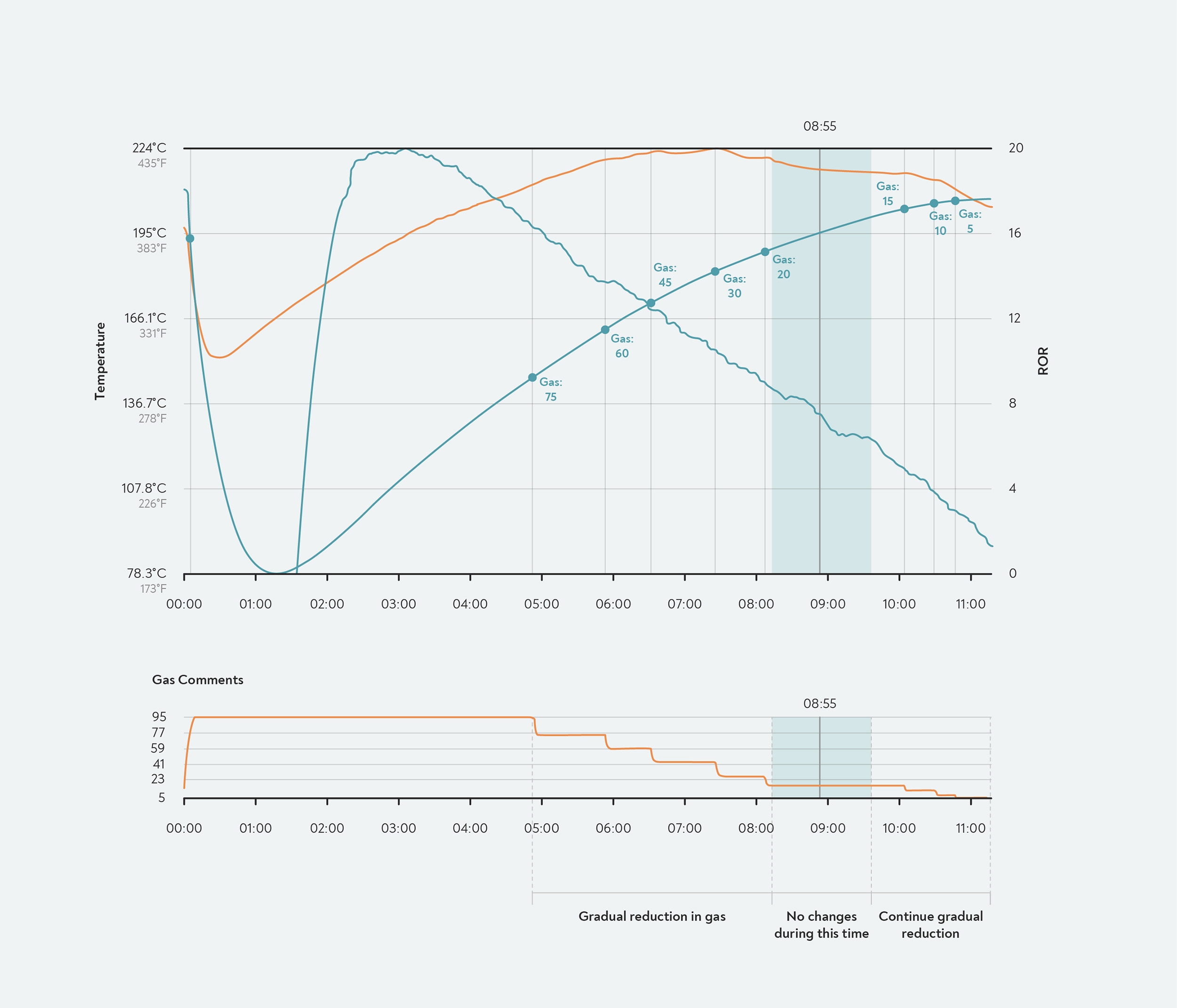Air roasters and classic drum roasters require quite different approaches to managing the gas settings during the roasting process.
When you roast a batch in a directly heated drum roaster, it’s best to start at a high gas setting and then gradually lower the amount of heat applied. The only exception is during the 45 seconds before and after first crack; during this time interval, avoid changing the gas setting.
 Gas management in a drum roaster. Scott begins the roast at a high gas setting and then gradually lowers the gas as the roast progresses — until 45 seconds before the beginning of first crack. At this point, he makes no further gas changes until at least 45 seconds after the beginning of first crack.
Gas management in a drum roaster. Scott begins the roast at a high gas setting and then gradually lowers the gas as the roast progresses — until 45 seconds before the beginning of first crack. At this point, he makes no further gas changes until at least 45 seconds after the beginning of first crack.
In an air roaster, on the other hand, Scott’s preferred approach is the ‘gas pyramid’. Begin on a moderate gas setting and gradually increase the gas during the first few minutes of the roast. Keep the gas at a high setting for a time and then gradually lower the gas setting until the end of the roast.
The two types of roasters require different approaches because of the unique characteristics of their drums. In a drum roaster, a significant portion of the heat applied to the beans comes from the drum itself. At the beginning of the roast, the cold beans rapidly cool the drum, and a high gas setting is necessary to reheat it. In an air roaster, the drum temperature is much less important because the hot air alone is adequate to give the beans the energy they need in the early part of the roast.
Whatever approach you take to managing the gas settings, be sure to limit yourself to a manageable number of gas changes — not more than eight. If you try to finesse the roast curve with too many incremental gas changes, the process becomes hard to manage and errors become much more likely.
| A Typical Example of Drum Roaster Gas Management | |
| Roast Progression (bean temperature : development time ratio) | Gas Setting |
| Charge at 200°C (400°F) | 80% |
| 150°C (300°F) | 60% |
| 160°C (320°F) | 50% |
| 170°C (340°F) | 40% |
| 180°C (355°F) | 30% |
| 185°C (365°F) | 20% |
| First crack at 190°C (375°F) | |
| 12% DTR | 12% |
| 14% DTR | 8% |
| 16% DTR | 4% |
The timing of gas changes in the early part of the roast should be guided by changes in the bean temperature.